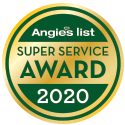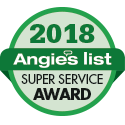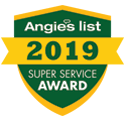How Does Paint Primer Work?
Primer: What it Will Do, What it Won’t Do, and How to Get the Most Benefit From It
Primer is a vital tool that you can use to help your painting project go more smoothly. However, there are many misconceptions surrounding how it works that may cause you to expect irrational benefits or use it incorrectly. We’d like to clear some of those up for you:
Primer WILL:
Improve paint adhesion: Good primer will adhere well to any surface for which it is made. The same is NOT true for paint. By priming first, you are creating a sort of emulsion between the paint and the surface, which will help maximize the life of your paint job by preventing peeling, bubbles, and blisters.
Improve paint coverage: Definitely DO NOT skip the primer when you are doing a drastic color change or trying to cover over a pattern or design of some sort. *TIP: Tint your primer to match your paint color by mixing in just a little of the paint. This will help with color coverage better than plain white primer.
Block SOME stains from bleeding through: Primer will help your paint cover over blemishes such as marker scribbles, food dyes, and general age and dinginess.
Primer WILL NOT:
Prevent mold or rust: There are certain primers that are specially formulated to help block old mold or rust from showing through a new coat of paint, (try Zinsser 1-2-3 Primer, sealer and stain killer,) but do not expect ordinary multipurpose primer to handle this.
Allow you to paint over metal, plastic, or other non-porous surfaces: Simply using a general-purpose primer will not make your paint adhere to surfaces like these. You must use a specialty primer that is designed specifically for helping to bond paint to such a surface. Try KWAL Waterborne DTM Bonding Primer.
Erase cracks and other imperfections: While it is true that primer is thicker than paint, you still can’t rely on it to hide defects. It will simply create a bubble over the top of the crack or hole, and when it is dry, the bubble will pop, and you’ll be right where you started. Use caulk or painter’s putty instead.














Follow Peak Pro:
Follow Peak Pro Painting for ideas and inspiration for all of your residential painting projects.